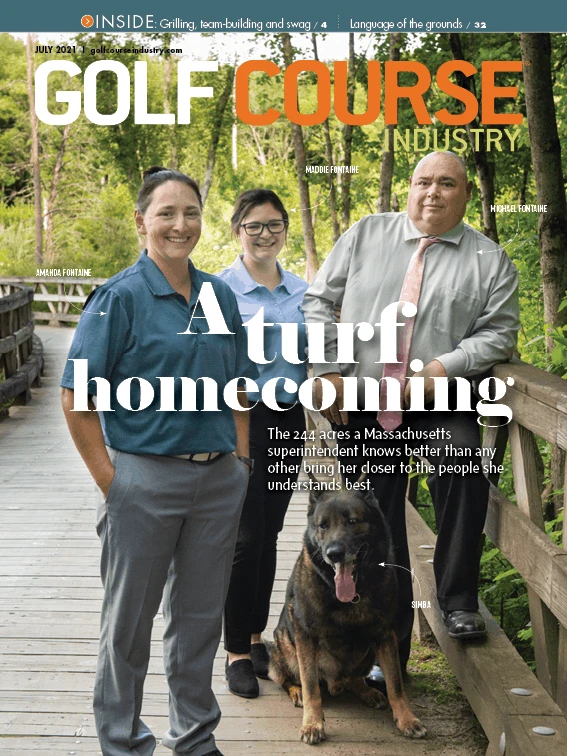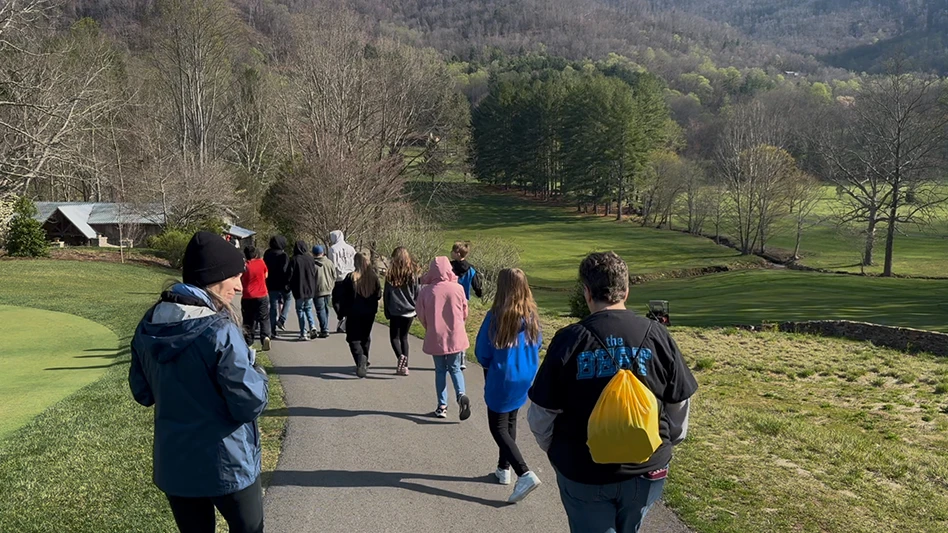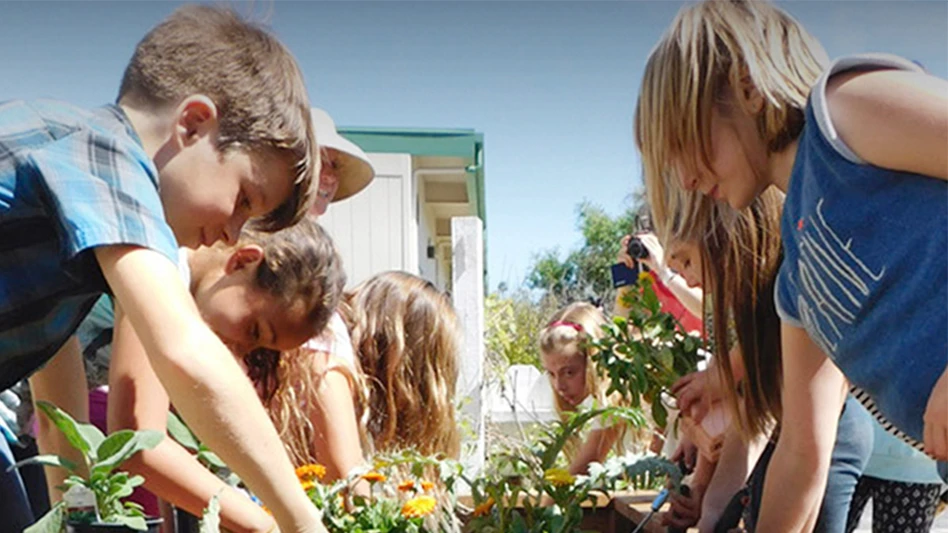
The hills that roll through Fox Chapel, Pennsylvania and surround its namesake golf club are covered with sunlight before 6 on a late spring morning. The trees are in bloom. The drive is bucolic. This is still as perfect a setting for a golf course as it was when Seth Raynor designed each hole nearly a century ago.
The parking lot is nearly empty at this hour. Superintendent Jason Hurwitz talks with his crew, which will climb to 38 by the start of summer, for about 15 minutes. They filter out of the maintenance facility that sits on prime real estate between the lot, the clubhouse and the 18th green by 6:25, ready for the day ahead.
And what a day. The course is closed for normal play and architect Tom Marzolf is on site for a special event to show off the recent restoration that lends Fox Chapel Golf Club a nostalgic atmosphere. If not for golf cars crossing the grounds — and a lack of hickory clubs and plus-four slacks — the feel is far more 1920s than 2020s. “It feels like a walk back in time,” Marzolf says. “The style, the shapes, the Raynor geometric forms repeated through the golf course. We have a collection of template holes here that not many people have.”
There is the punch bowl green on 2 and the reverse redan green on 6, the lion’s mouth bunker on 9 and the oasis green on 11, the Biarritz green on 17 that covers half an acre is the largest in the world outside New Haven, Connecticut.
The spotlight hole might be 16, Bottle, which measures 421 yards from the back tees and features 13 bunkers, three of them lined in the middle of the fairway and forcing players to drive either short along the right or long along the left.
“Seth Raynor was a good engineer by train-hope people accept it, ing, but he was a better golf architect,” Marzolf says. “The land here at Fox Chapel is ideal terrain for a golf course. The most important job of a golf course architect is to route the land and to walk 18 holes and decide where to place each golf hole. Seth Raynor did an excellent job locating the tees, land-ing areas and greens on this land.
Marzolf credits Hurwitz for his research and says the pair essentially worked together as co-designers on the project. “The flow of this golf course, over the land, the routing plan that Raynor staked out is very well done,” he says. “Each hole is in the best location. The routing, the staking allows the best course and the best next hole.” He calls it a routing plan “worthy of restoration. Our work here was simply a restoration of a Seth Raynor masterpiece.”
Working on a Roaring ’20s gem — and tracking down so many old sketches and images — provided Hurwitz with the inspiration to propose a proper renovation. The whole project took years.
“It’s amazing what’s happened in the last 10 years and how many Raynor courses have recently been restored and resurrected,” Marzolf says. “You hope people pay attention and you but that’s subjective.”
Two decades of giving back
David Whelchel is the center of attention during the afterparty at Hurdzan Golf Course Design’s offices in Upper Arlington, Ohio. He’s dressed in a purple polo shirt and jeans, and he tears up as friends and acquaintances shower him with gifts. Whiskey, cigars and a handmade trophy from Whelchel’s own tournament are presented to him as he wells with emotion. Next to him, Michael Hurdzan smiles and laughs with the crowd as he’s presented with his own gifts.
Many in the crowd have known Whelchel and Hurdzan for years, and these gifts pale in comparison to what the pair have done thanks to the Keepers of the Green charity scramble.
Keepers of the Green teed off in 2000 and has been held every year since except 2020. Causes donated to have included the Special Forces Association Support Program, which aids those in the special forces and their families, and Fore Hope, a nonprofit focused on using golf as a therapeutic practice for those with chronic illnesses and disabilities.
“When they talk about their family and golf, guess what? It’s Mike and Chris (Hurdzan) and his family and people who personally helped me over the years,” Fore Hope founder Mindy Derr said during the opening ceremony. Derr’s nonprofit was recently absorbed into OhioHealth and she was grateful for the help Hurdzan and Keepers of the Green provided.
“It’s our way of helping in any way that we can,” says Hurdzan, who was a colonel in the Green Berets and remembers how daunting the job can be. “It’s scary for a young family but if they know somebody that need to get to the hospital or they need medicine, or they’re having a problem with payments or something, there is a family support program that can help them if they need. It goes a long ways. So not only does the family appreciate it, the soldier feels good about it as well.”
This year’s outing might have been the last, though neither Whelchel nor Hurdzan is opposed to someone else taking over operations. “I think the tournament that we have is maybe a microcosm of all that helps people,” Whelchel says. “And maybe on the other hand it epitomizes what golf should be — that we can reach out and touch somebody and help them.” — Jack Gleckler

Explore the July 2021 Issue
Check out more from this issue and find your next story to read.
Latest from Golf Course Industry
- The Aquatrols Company hires marketing manager
- Renovating Bredemus in West Texas
- Renovation starts at Okatie Creek GC at Sun City Hilton Head
- The Fittest Podcast in Turf: Episode 1
- New 6-hole course debuts in Oklahoma
- GCSAA announces Grassroots Ambassador Leadership Award recipients
- Reel Turf Techs: David Gummo
- PBI-Gordon promotes two to executive level





